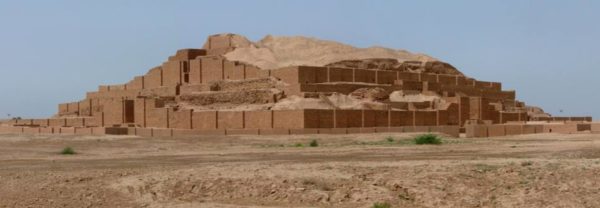
Chogha Zanbil consists of the ruins of three concentric walls. Within the ruins are palaces, temples and a central Ziggurat (temple tower), measuring 105 X 105 meters.
The first wall has seven gates, which reflects the religious ideologies of that time. Between the inner and middle walls, several temples dedicated to different Elamites divinities existed.
The second wall (460 X 420 m) enclosed seven temples and four chapels.The outer city wall was about 4 km long and enclosed an area of approximately 100 hectares. The royal quarter situated adjacent to a major city gate some 450 m east of the Ziggurat. In this area, an extensive water tank and a group of three major buildings excavated. Beneath one of these buildings, five underground tombs of monumental dimensions unearthed.
Finally, the interior wall (190 X 170 m) encloses the Ziggurat. It originally was 53 m and five stories high, the largest surviving monument of its kind, beyond Babylonia and Assyria. It was constructed according to the models of the Mesopotamian culture. The monument was built in two stages and in the second phase took its multilayered form. The outer facade of the Ziggurat is of baked bricks and the rest of the building is of unbaked mud adobe.
Additionally the complex built mainly of mud-bricks. The monuments built and decorated with glazed baked bricks, gypsum, ornaments of faience and glass. Thousands of baked bricks bearing inscriptions with Elamites cuneiform characters were all inscribed by hand. Which ornamenting the most important buildings. Glazed terracotta statues such as bulls and winged griffins guarded the entrances to the Ziggurat Iran.
At last, you can review UNESCO‘s post about Chogha Zanbil. And To visit Chogha Zanbil in Khuzestan, please have a look on our tours.